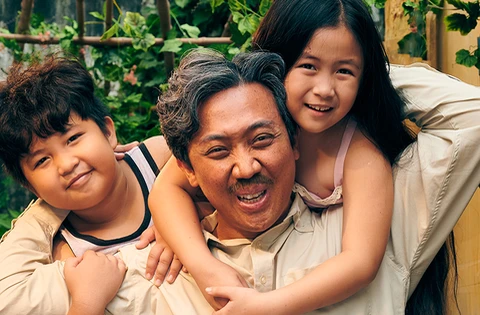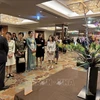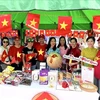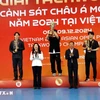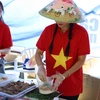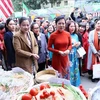Hanoi (VNS/VNA) - Storing and restoring films is a way for cinema to become the living heritage of a nation. This requires financial and human resources but is also an urgent requirement for the Vietnamese cinema industry, according to experts.
While film businesses and theatres have long since transitioned to digital, state-owned film archive units are still in the early stages of the digital process.
The Fourth Industrial Revolution has had a profound and comprehensive impact on all fields of society and cinema is no exception, according to Nguyen Xuan Du, deputy head of the Vietnam Film Institute (VFI).
“Vietnamese archive units struggle to store and restore films,” Du said. “The units have to continue storing film in the traditional way and get access to digital technology.”
Films have been stored at state-owned studios and television stations. All films made using the state budget are stored at VFI. At present, VFI stores some 80,000 films and only a third of them have been digitalised.
Due to the impact of rapid technological changes, each film archive unit has different approaches to technology that suits its situation in making the transition from film to digital, according to Du.
He also stressed the significance of film conservation because it is deeply related to the development of a nation.
The Ho Chi Minh Museum stores more than 30,000 original films about President Ho Chi Minh. This is a national treasure containing many irreplaceable values but it is not easy to ensure their longevity in Vietnam's hot and humid weather, according to Nguyen Huong Giang, deputy head of the museum’s Inventory Division.
“To digitalise films at the museum is an inevitable trend,” Giang said. “Film digitalisation will be convenient for extraction without affecting the original film.”
In addition, a large number of documentaries, including films made by the Vietnam Liberation Army Team, the predecessor of the Vietnam People’s Army, and films by Saigon regime troops are in the People’s Army Cinema's store.
“Army cinema filmmakers were present at fierce battles in the war against American to show truthful scenes of the enemy shooting,” said Major Nguyen Thi Mai, deputy head of the People’s Army Cinema’s Archive Division.
Until 1997, documentaries by the army cinema were stored in cool conditions, but the store’s humidity and temperature monitoring systems and devices have fallen below standards. Many documentaries have become degraded and can't be used, according to Mai.
“Tens of thousands of films are not only valuable to the army but they are also the heritage of the nation. We will carry out film digitalisation gradually whilst still restore films.”
Film digitalisation not only helps store classic movies but also makes them accessible to viewers.
Recently, the digitalised film Tuoi Dại (Green Age) was restored from 35mm original by its director Thai Thuc Hoang Diep after being stored in Hong Kong for a long time.
It was made in 1974 about students in Saigon. The digitalised film was published on YouTube in April.
Last month, children watched a large number of Vietnamese animations on VTVGo.
In June, the Vietnam Film Development Association and Vietnam Television Digital helped screen digitalised classic movies such as Vo Chong A Phu (The A Phu Couple), Chi Tu Hau (Ms Tu Hau), Lang Vu Dai Ngay Ay (Once Upon a Time in Vu Dai Village), and Dung Dot (Don't Burn). Almost all of them were made a few decades ago.
“It was a surprise to watch Vietnamese classic movies online,” said Nguyen Thi Ngoc, an audience in Ba Dinh district. “Plus, watching animations online is meaningful for children in summer.”
O Kia Ha Noi Film Production by director and producer Nguyen Hoang Diep is working with the VFI and VINIF Fund to carry out a project on digitalise films to preserve Vietnamese cinema heritage.
Diep also expressed her concern about conservation of Vietnamese films.
“The degradation of cellulose film is inevitable,” said Diep. “Cellulose film is the most brilliant but also the most fragile.”
"Conservation of cinema heritage cannot be done quickly but is a long journey which will need help from the authorities, organisations and filmmakers," said she./.


